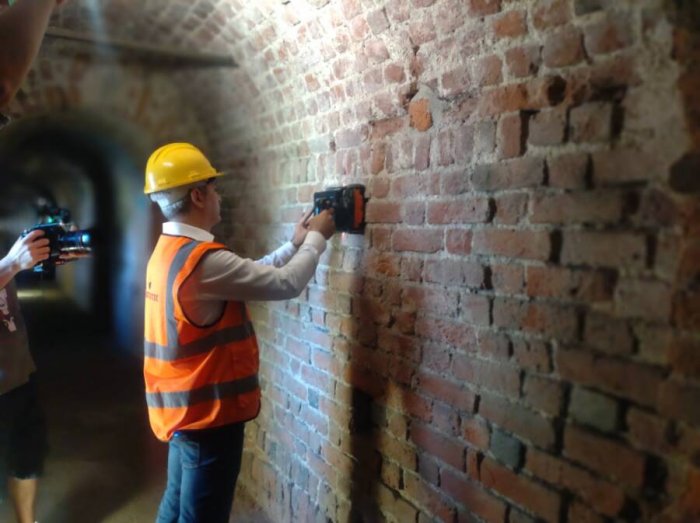Jan Bartek – AncientPages.com – Scientists have uncovered a piece of history hidden for centuries. Researchers at the Sforza Castle in Milan, Italy, have discovered an intricate network of underground passages. These tunnels were initially sketched by Leonardo da Vinci around 1495 and have remained concealed until now.
Left: Da Vinci – Public Domain – Right: Sforza Castle – Credit: zheng.yan – CC BY-SA 4.0 – Image compilation – AncientPages.com
The Sforza Castle, dating back to the mid-14th century, has undergone many transformations, with only about one-sixth of its original structure still intact today. In 1495, Leonardo da Vinci was tasked by the lord of Milan to enhance the castle’s interiors and devised sketches featuring complex military fortifications.
Now, thanks to cutting-edge techniques like ground-penetrating radar and laser scanning employed by Polytechnic University of Milan researchers, these long-rumored tunnels beneath this historic 15th-century castle have finally been confirmed.
Doctoral students at the Polytechnic University of Milan have embarked on a thesis project to map Sforza Castle. This historic Milanese castle has undergone numerous expansions and renovations over the centuries, evolving into a magnificent royal residence renowned for its artistic significance. In the 15th century, notable artists like Leonardo da Vinci and Donato Bramante were commissioned to create frescoes within the castle. Da Vinci painted the frescoes in the Sala delle Asse, or “room of wooden panels,” which is adorned with intricate floral motifs.
A researcher is employing advanced technology to develop a “digital twin” of Sforza Castle. This process involves creating a highly detailed and accurate digital replica of the historic structure, allowing for enhanced analysis, preservation efforts, and virtual exploration. Credit: Politecnico di Milano
In addition to his renowned frescoes, Leonardo da Vinci documented the intriguing underground tunnels of the castle in his sketches. For centuries, these passageways have captivated historians, believed to have been constructed by Ludovico Sforza—also known as Ludovico il Moro, Duke of Milan—to link Sforza Castle with the Basilica of Santa Maria delle Grazie, where his wife was interred. Given the castle’s significant historical heritage, researchers were motivated to develop a “digital twin” of the site. This effort aimed to uncover any historically significant findings and resolve the longstanding mystery surrounding Sforza’s rumored tunnels.
The research team used ground-penetrating radar and laser scanners. The radar, mounted on vehicles, identified underground anomalies via electromagnetic waves as they drove across the castle grounds. Then, the laser scanner created 3D images of the data, revealing tunnels just a few feet below the surface.
Francesca Biolo, an architectural historian affiliated with the Polytechnic University of Milan, has played a pivotal role in this significant discovery. During her dissertation research, she collaborated closely with Sforza Castle authorities and the engineering firm Codevintec Italiana to investigate the concealed areas of the castle.
A car with ground-penetrating radar maps the underground tunnels at Sforza Castle. Credit: Politecnico di Milano
“The ground-penetrating radar enhanced the 3D model with data on known but inaccessible spaces, revealing unknown passageways and suggesting ideas for further studies on secret passages,” Biolo said in a press release.
She emphasized that the discovery aligns with Leonardo da Vinci’s acknowledged expertise in military architecture.
See also: More Archaeology News
The team intends to continue mapping the castle to develop its “digital twin.” This initiative will enable researchers to study the castle’s evolution over time and provide tourists with a more comprehensive experience during their visits. Beyond historical documentation, the data gathered has created new possibilities for enhancing tourism at the Castle. By incorporating augmented reality technologies and developing virtual pathways, visitors can explore underground areas and otherwise inaccessible historical sites, offering an immersive experience that blends history with innovation.
Written by Jan Bartek – AncientPages.com Staff Writer











